Whether it's adhesives for big industry or those used in carpentry workshops, the time the object sits in the press or clamped in the clamps is very important. It determines the entire production flow or the time in which an order can be delivered. This is why it is important to know what factors influence the reaction of adhesives and how the bonding should be made to be as strong as possible. Although the generic term is aracite or PVA adhesives, they can be of several types and must be chosen according to the characteristics of the production, the existing equipment and the usual conditions in the factory or workshop.

Factors influencing the reaction time of PVA polyvinyl acrylic adhesives
PVA adhesives, also known as aracite adhesives, are aqueous dispersions. In order to become tacky, the water must evaporate and the molecules must come very close together and react to form the adhesive film. This is the theoretical explanation for sticking. In real life, however, there are a number of variables that influence both the reaction speed of the adhesive and the strength of the bond. That is why the manufacturer gives an indicative drying time for the adhesive under certain environmental conditions in the hall or workshop where the gluing is carried out.
As this is water evaporation, the factors influencing the bonding time are temperature, humidity and air circulation in the room. Water will evaporate more quickly at high temperature and low air humidity and if air is moving in the workspace. These are general rules for products using water as a solvent, which are also valid for drying other materials (e.g. varnishes or paints).
With water as a solvent, the adhesive will be sensitive to low temperatures. Therefore it should not be transported or stored at temperatures below 5°C. Freezing leads to loss of quality and the bond will not be strong. But there are exceptions. Adhesive TISZABOND D3D produced and distributed by Szolvegy from Târgu Mureș, withstands repeated freeze-thaw cycles without losing its qualities.
Another factor influencing drying time is wood moisture or wood derivatives. The drier the wood, i.e. the moisture content is in the range 8-12% (for wood used indoors), the faster it will bond. Some of the water will be naturally absorbed into the wood which will bring the molecules together and trigger the polymerization reaction that leads to the formation of the adhesive film. Another advantage of using a wood with low humidity is the strength of the bond between the two elements, because with the water, the adhesive also enters the wood.
Layer thickness deposited on the elements to be bonded is another factor influencing the drying time. Water evaporates more slowly from a thick layer, thus prolonging the waiting time for the open phase of bonding.
Soldering process
Bonding basically takes 3 steps:
- adhesive application and open phase,
- the reaction itself, when the elements are in the press (or clamped),
- finalizing the reaction.
FThe open bonding area is the time between when the adhesive has already been applied and when the elements are put in the press or clamped. Water evaporates much more quickly at this stage and it is not recommended that, immediately after the adhesive has been applied, the elements are put in the press as this would greatly prolong the reaction time.
The actual bonding takes place in the press, when the pieces are "forced" to stand side by side. Most of the water has already been removed in the previous phase and now the reaction between the adhesive molecules takes place. When they are next to each other the reaction will start regardless of the conditions. But the process is accelerated by temperature. Unlike cold-pressing which can take up to 2 hours, the time needed for high-temperature bonding is in the order of minutes.
In finalisation phase the reaction continues deep into the solder film. The reaction starts at the surface and continues inward. When the parts are removed from the press the parts are bonded, the film has formed between them, but if they are immediately subjected to testing or processing it is possible that the bond may come apart. This is why manufacturers recommend that, after removal from the press, the parts should be left for a period before processing.
Special types of PVA adhesives
Because time is an important component in production, both manufacturers of adhesives and manufacturers of presses and other such machines are trying to find solutions to reduce it as much as possible. This results in adhesives that need a shorter open-phase time or have a higher speed of reaction to completion.
Hot presses or CIF high-frequency current presses are available for faster reaction. Special adhesives must be used for CIF presses. Szolvegy recommends the following for those using such presses TISZABOND D2 Rapid 2150, a PVA adhesive that forms the film in 5 minutes. The adhesive is recommended for bonding furniture elements that do not stand in high humidity environments.
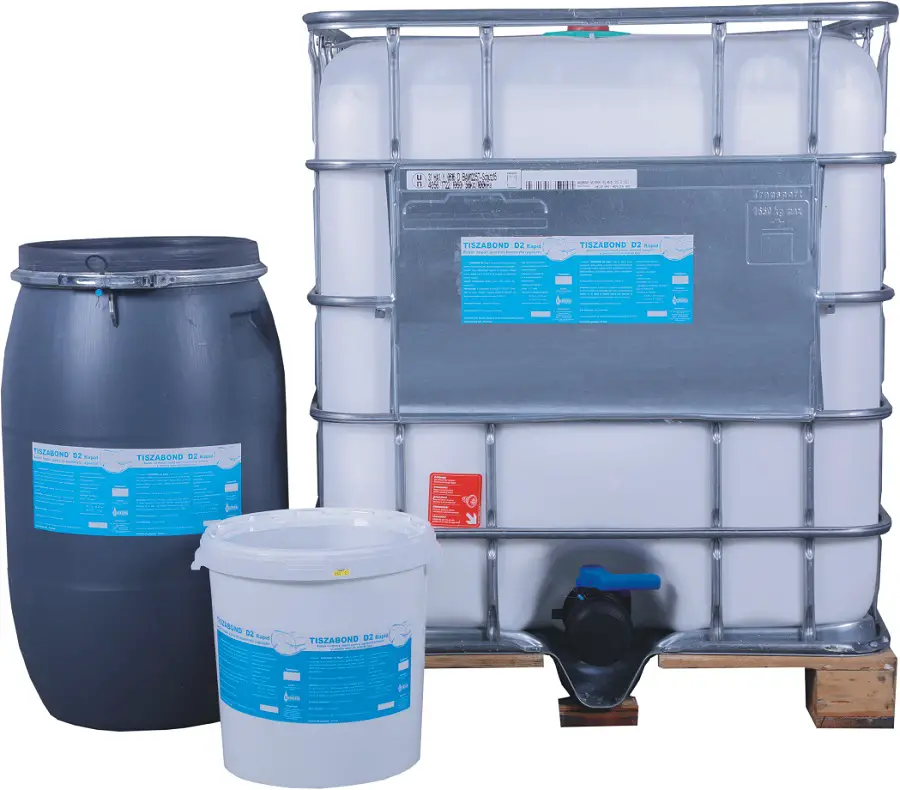
Short working time is important, but it should not take precedence over quality. As much as we want certain processes to be shortened, it must be understood that quality bonding requires, in addition to a good adhesive, the right technologies and conditions in both the working and storage areas. The elements to be bonded also influence the process. Their temperature and humidity are as important as those of the working environment. It is not possible, for example, to achieve adequate water evaporation in the open phase if the wood is brought directly from the unheated warehouse without the necessary acclimatization time. If you want a shorter gluing time and resistant glues you have to act on the elements that do not influence the final quality of the product.
























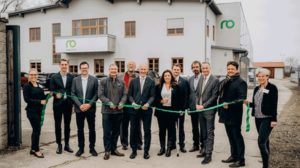
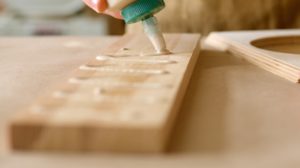
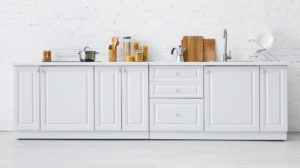
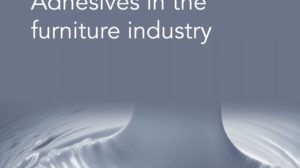
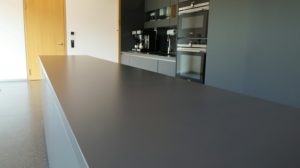

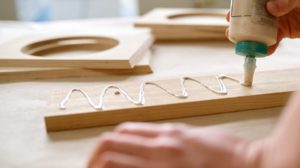
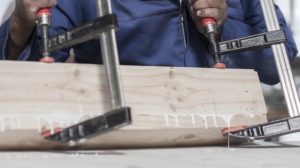
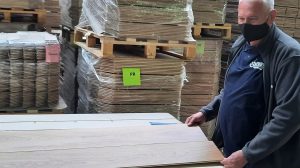



Add comment